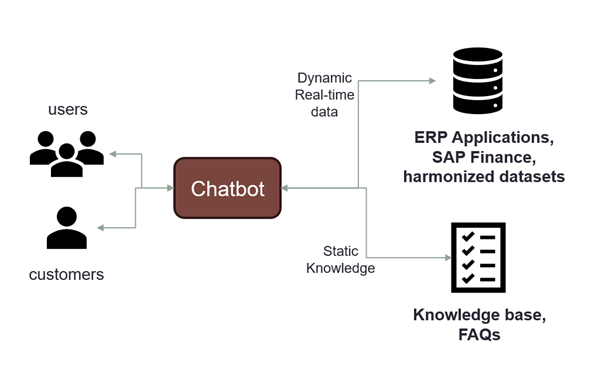Navigating Analytics Revolution with SAP and Microsoft's AI Collaboration
- Sergei Peleshuk
- Sep 15, 2023
- 2 min read
Updated: Oct 28, 2023
At the recent SAP Sapphire event, the spotlight shone brightly on a promising partnership between Microsoft and SAP (see video). This union centers around the rich possibilities of Generative AI. But what does this collaboration entail, and why does it matter?
1. The Need for AI in SAP's Data Landscape
AI applications tailored to SAP-sourced data
The demand for AI applications tailored to SAP-sourced data underscores the broader trend of businesses seeking deeper, more actionable insights from their existing systems. As AI technology evolves and businesses recognize its potential to unlock the value of SAP data, this demand will only continue to surge. The integration, while challenging, promises a future where decision-making is faster, operations more efficient, and businesses more attuned to their customers' needs.
Microsoft Azure's AI Services
The potential of Microsoft Azures AI Services goes beyond just providing tools for machine learning, deep learning, and Chat GPT-like services. Its about transforming the way businesses operate, making AI accessible to a broader audience, and ensuring that companies, irrespective of their size, can leverage the transformative power of AI. As more and more businesses realize this potential, the future of AI in the business world looks brighter than ever.
2. Platform Options for Modern Data Integration
To begin constructing AI business solutions, it's essential to have data stored on a suitable platform. Technically, this could be a data warehouse, data lake, data mesh, or a lake house. If you're considering data platforms to integrate both SAP and non-SAP data, these are the best options to consider.
SAP-centric solutions
SAP Datasphere: This cutting-edge cloud-based data warehouse offers advanced analytics functionalities.
SAP BW/4HANA: This is an on-premises powerhouse, offering an open, scalable architecture for contemporary analytics needs.
Vendor-agnostic options
Microsoft Azure: Azure's toolkit, including Azure Data Factory, Synapse Analytics, and Data Lake, provides a full-stack solution for integrating and analyzing data from diverse sources, SAP included.
Microsoft Fabric: This unified analytics framework integrates Azure services and Power BI, enriched by its centralized data repository, OneLake, to offer easy, AI-powered analytics across Microsoft 365 apps.
Amazon Web Services (AWS): With offerings like Redshift, AWS Glue, and S3, AWS provides robust options for both SAP and non-SAP data analytics.
Google Cloud Platform (GCP): Known for its scalability and versatility, GCP's BigQuery, Dataflow, and Pub/Sub provide powerful tools for integrating SAP with other data sources.
Snowflake: This cloud-native platform offers a comprehensive suite of data integration, warehousing, and sharing tools.
Databricks: Optimized for leading cloud platforms, it offers a unified analytics space for big data and AI projects.
A look at a potential data architecture
For companies considering Microsoft's advanced analytics platform to merge SAP data with other formats, a tailored architecture can be developed to cater to these requirements. Here's a broad overview of possible data architecture with the primary transactional data stemming from the SAP S/4HANA ERP system:

Conclusion
The collaboration between SAP and Microsoft promises a transformative leap for businesses, providing them with comprehensive tools and services to seamlessly bridge SAP's data architecture with Microsoft's AI-driven solutions.




Comments